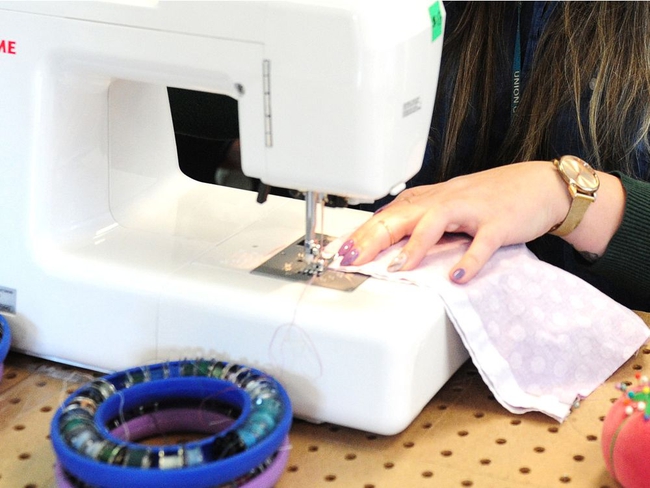During the first few days of lockdown in March, I decided that I needed a good hobby to occupy my time, so I bought a sewing machine. When I was a kid, my aunt had taught me how to sew pillows, so I figured sewing dresses wouldn’t be that much harder. I was overconfident, to say the least; it took me around two hours to get the machine working in the first place. Finally, when I had correctly maneuvered the thread through the many loops and pinholes on my Singer, it took me another two hours to sew a square of fabric into a face mask.
I love clothing, so it seemed like it was only a matter of time until I started sewing my own. Personal style is one of the few parts of one’s outward appearance that can easily be changed. Clothes can directly affect one’s attitude and confidence and reflect one’s interests, cultural heritage, and personality. But there is a transformative magic in this wearable art form, too. A professional actor in a theatre production or a little girl in a princess dress will both be able to say that when they put on a costume, they become a whole different person. I have been fascinated by this transformative potential of fashion ever since I was that little girl in a princess dress.
However, as a fashion lover, I cannot ignore the immense damage that the fast fashion industry has caused since its beginnings in the Industrial Revolution. Fashion is firmly, unflinchingly rooted in capitalism: With the need for constant novelty, fashion perpetuates an endless cycle of production, consumption, and waste for every season of the year. Underpaid workers suffer so that others can wear a cheaply-made crop top that will be out of style in a couple of months. The industry has changed little since the 18th century—the only difference today is that many people choose to ignore its unethical practices because they are not personally affected.
As it stands, it is difficult to find cute clothes that are eco-friendly, ethically produced, and—most importantly—affordable. Thrifting is a good option that I rely on the most, but it is not always a perfect solution. I often end up buying more clothes than I need when they are less expensive, leading to piles of unworn statement jackets and gaudily-patterned button-downs stuffed in the back of my closet. Luckily, sewing has given me a reason to revisit those items, giving new life to pieces that I might have donated once again.
Because I started sewing during a time when many stores were closed, recycling old fabric was not only my best option to reduce waste—it was the only option. I made my first dress out of tie-dyed bed sheets, using a free pattern that I found on the internet. Supplies like thread, pins, and zippers cost me less than $10, but creating the dress itself took around four days in total. It was at this point that I started to think about the sheer amount of labour that goes into every garment. Both retail or second-hand clothes come with a long history: Someone made the pattern for your favourite jeans, and someone sewed the buttons onto your comfiest flannel shirt. Sewing and altering clothes has made me hyper-aware of the production behind my favourite pieces, bringing me face-to-face with the production process of something you would typically ignore.
Of course, not everyone should feel the need to sew their whole wardrobe by hand, as it can be a time-consuming and expensive hobby. However, I do recommend treating your wardrobe with care. Mending and making small adjustments to old clothes requires only a needle and thread, and it can greatly prolong the life of a shirt or a pair of pants that would otherwise end up in a landfill.
Individuals are not the ones to blame for the destructive impacts of the fashion industry, but we can still be more mindful of our relationship with the clothing that defines and protects us daily. Fashion is a source of creativity and self-expression for myself and many others, and by acknowledging the history of how our clothes are made, we can re-examine and change the trajectory of their future.







